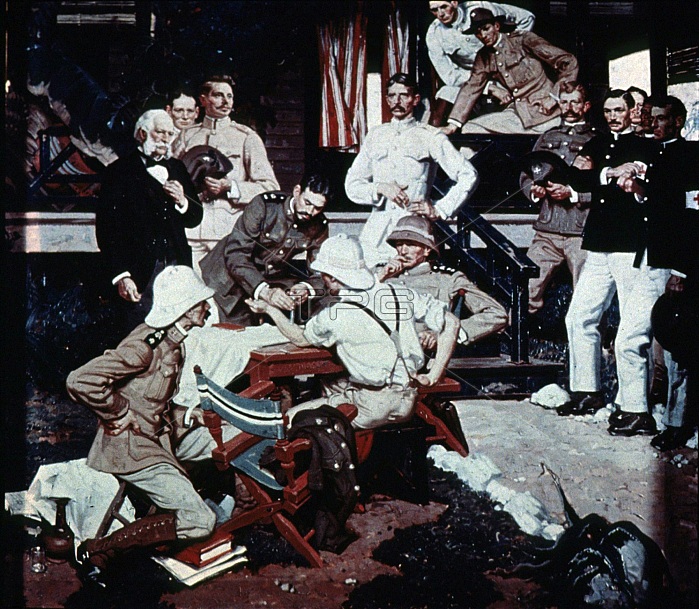
In 1900, Major Walter Reed was given the responsibility of finding the cause of yellow fever and eliminating it. After many unsuccessful experiments, he decided to test an old but unproven theory that the disease was transmitted by mosquitos. Unfortunately, no animal was known to be susceptible to yellow fever at the time, so it was necessary to use human volunteers. In the painting, Lazear, who died a month later as a result of self-experimentation, is shown inoculating Carroll with an infected mosquito. The experiment proved conclusively that the mosquito was the carrier of yellow fever. Walter Reed, (1851-1902) was a U.S. Army physician who in 1900 led the team that postulated and confirmed the theory that yellow fever is transmitted by a particular mosquito species, rather than by direct contact. This insight gave impetus to the new fields of epidemiology and biomedicine, and most immediately allowed the resumption and completion of work on the Panama Canal (1904-14) by the United States. Aristides Agramonte y Simoni (1868-1931) was an American physician, pathologist and bacteriologist with expertise in tropical medicine. Jesse William Lazear (1866-1900) was an American physician. Major James Carroll (1854-1907) was a US Army physician.
| px | px | dpi | = | cm | x | cm | = | MB |
Details
Creative#:
TOP22159169
Source:
達志影像
Authorization Type:
RM
Release Information:
須由TPG 完整授權
Model Release:
No
Property Release:
No
Right to Privacy:
No
Same folder images:

 Loading
Loading